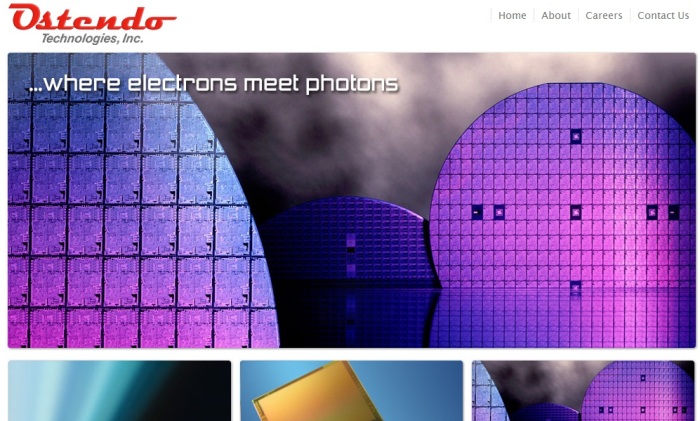Hologram Projection: The Next Gimmick Feature of High End Smartphones?
![By Thelmadatter (Own work) [CC-BY-SA-3.0 (http://creativecommons.org/licenses/by-sa/3.0)], via Wikimedia Commons](https://techtheday.com/wp-content/uploads/2014/06/hologram-demonstration.jpg)
By Thelmadatter (Own work) [CC-BY-SA-3.0 (http://creativecommons.org/licenses/by-sa/3.0)], via Wikimedia Commons
Over the years, new hardware and software features have been added to smartphones to keep buyers’ excitement and interest in buying them. From the higher resolution displays and cameras to the heart rate sensors and fingerprint scanners, manufacturers have tried to bring something new and different to entice more buyers to upgrade to a new device. As crafty tech miniaturization shrinks chips further, it appears that hologram projection may soon become a new feature for smartphones.
Ostendo, a California based developer of next generation display technologies, has come up with a chip that can produce holograms. For around nine years, the company has been developing tiny projectors that can project videos and 3D images without the need for 3D glasses. What’s even better is that Ostendo’s 3D projecting chip is considerably smaller than a small pinky finger. This highly capable piece of tech has enough components that can control the brightness, color, and angle of light beams across a million pixels.
The size of Ostendo’s 3D projecting chip is small enough to make it fit inside a smartphone but is sufficiently powerful to project an image of up to 48 inches diagonal. According to Hussein S. El-Ghoroury, Ostendo’s CEO and founder, the company is scheduled to ship the first batch of chips next year. However, they are not the 3D projecting type yet. They only emit 2D videos. The 3D/holographic capable chips will soon be released after the first batch.
Ostendo Quantum Photonic Imager
Ostendo has developed a high-tech device that combines an image processor with a wafer that has micro LEDs that can render images. A prototype of which was shown to The Wall Street Journal. It is a device with six Ostendo chips configured to emit a 3D image of a green dice suspended and spinning in the air. The resolution is also impressive at about 5,000 dpi (on the tip of the projector, not the projected image). The estimated cost of the Quantum Photonic Imager chip is around $30.
With its size and power, Ostendo’s chip is expectedly an attractive option for the next flagship smartphone of major manufacturers such as Apple and Samsung. A few companies have already released smartphones with projectors such as the Samsung Galaxy Beam but none has come up with something that possesses holographic projection capabilities. It won’t be surprising for companies to pick Ostendo’s chip up for their latest hardware upgrade.
Does It Make Sense?
This question is worth asking: Does it make sense adding holographic projection capabilities to a smartphone? What purpose does it serve? Does it have any chance of going beyond the bragging rights? Unfortunately, there isn’t any practical reason to have holograms emanating from a smartphone. It looks impressive but it does not have any practical purpose. It’s also likely to increase a device’s price and battery consumption without offering anything useful.
Already Existing Technologies worth Pursuing
There were many hardware additions to smartphones that failed to become a hit but it should be worth giving them another try. Increasing the price of a device by adding unnecessary features such as hologram projection does not make much sense. The miniaturization achieved in coming up with Ostendo chips could have been put to better use by coming up with improved versions of the following technologies:
- Xenon flash – The LEDs used as flash for smartphone cameras simply can’t match xenon flash. A thinner xenon was already reported once but it still nowhere near commercialization. It will definitely be a boon for smartphone photography to have powerful but thinner xenon flash to keep the bulkiness in check.
- Optical zoom – Samsung’s Galaxy Zoom and the recently released K Zoom are great smartphones with dependable optical zooming. However, they are still too bulky for comfort. It should be great to finally find a way to miniaturize their zooming components.
- OIS – Not many smartphones have optical imaging stabilization or OIS, which should address the problem of shaky videos and blurry photos taken by smartphones. Digital stabilization works sufficiently just like the one used by Sony’s Xperia Z2 handset. However, digital stabilizations crops the field of view, resulting in the inability to capture wider views and greater details.
- Foldable displays – Lastly, having a foldable display would definitely be much better than the ability to project holograms. Flexible displays are practically worthless as what has been shown by the likes of Samsung’s Galaxy Round and LG Flex.
New technologies are always welcome but if they don’t serve practical or sensible applications, it’s better to spend the time, effort, and resources spent on them on other more worthwhile endeavors. Perhaps hologram projection can be useful someday or it may even become the standard in the future. For the foreseeable future, though, it does not appear to be that important to even think of integrating them in smartphones.

![By User:Dieter Jung (Dieter Jung) [CC0], via Wikimedia Commons](https://techtheday.com/wp-content/uploads/2014/06/hologram-sample.jpg)